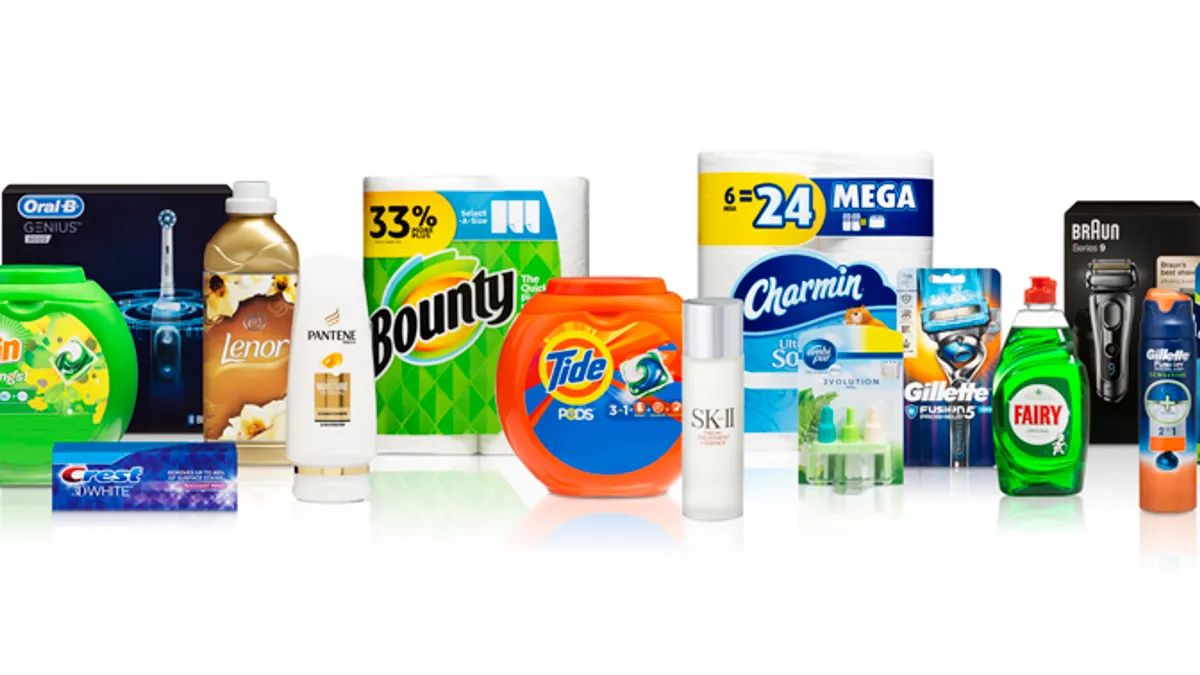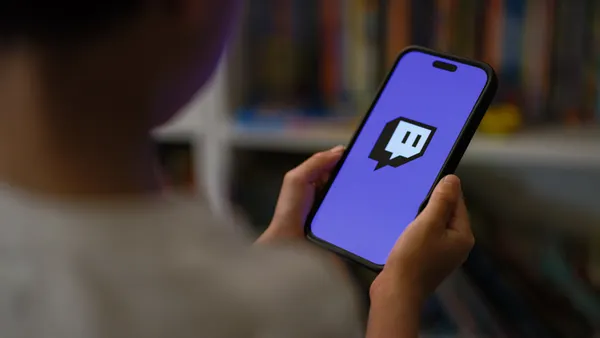Dive Brief:
- Procter & Gamble boosted its marketing spending as U.S. sales soared when shoppers began stocking their pantries with toilet paper, laundry detergent and cough medicine during the coronavirus pandemic. U.S. sales jumped 10% during the first three months of the year, helping to offset an 8% decline in China that wasn't as bad as previously feared, CFO Jon Moeller said in a conference call with analysts.
- "There's big upside here in terms of reminding consumers of the benefits that they've experienced on our brands and how they've served their and their families' needs, which is why this is not a time to go off air," Moeller said in a discussion about the company's marketing. The company, whose brands include Charmin, Bounty, Tide and Olay, increased marketing spending more than $320 million in the quarter, or by 1.9 percentage points as a share of sales, Ad Age reported.
- P&G boosted spending even as it continued to cut overhead and marketing costs by $120 million, or 0.7 percentage point. Its marketing spending, excluding overhead and reduced fees, rose by $240 million from a year earlier and was higher than the $100 million increase in the prior quarter, Ad Age reported. P&G's net sales rose 5% to $17.2 billion during the quarter from a year earlier, per its earnings report.
Dive Insight:
As the world's biggest advertiser, P&G sets the tone for the consumer packaged goods (CPG) industry and the many companies that rely on its estimated $10.1 billion in yearly spending on media and marketing services worldwide. The company is committed to "doubling down" on marketing, in the words of CFO Jon Moeller, as the coronavirus pandemic spurs increased media consumption among people who are stuck at home and are more likely to see advertising.
"There's more media consumption occurring right now than probably there has been in three or four years," Moeller said. "So changing that model doesn't really make a lot of sense. I don't just mean TV, but digital consumption as well.”
The comments suggest that the company sees an opportunity to maintain or increase its spending on advertising, in contrast with a broader pullback until the pandemic subsides. While P&G has benefited from the stockpiling of households goods, it also seeks to maintain high visibility as empty store shelves lead consumers to try other brands, as Nielsen's NCSolutions found in a study this month of shopping trends during the pandemic.
"There are consumers that are trying products that they haven't tried before, but they aren't necessarily ours," Moeller said. "We need to work hard to ensure that we maintain mental and physical availability to the greatest extent possible, so that those consumers return to their beloved and trusted brands, which are ours, as they're more fully available."
Moeller said he expects the pandemic to affect consumer habits after the pandemic subsides, lifting demand for brands like Tide, Dawn, Cascade, Mr. Clean, Bounty and Swiffer amid heightened concerns about health and hygiene. Meanwhile, its grooming products, which include Gillette razors, experienced a 1% decline in sales from a year earlier, while beauty products only rose 1% in another sign of how consumption has changed, per a slide presentation that accompanied its quarterly report. The company maintained its guidance for organic sales growth of 4%-5% for the year, but lowered estimates for revenue growth to 3%-4% from a prior estimate of 4%-5% because of currency fluctuations.













